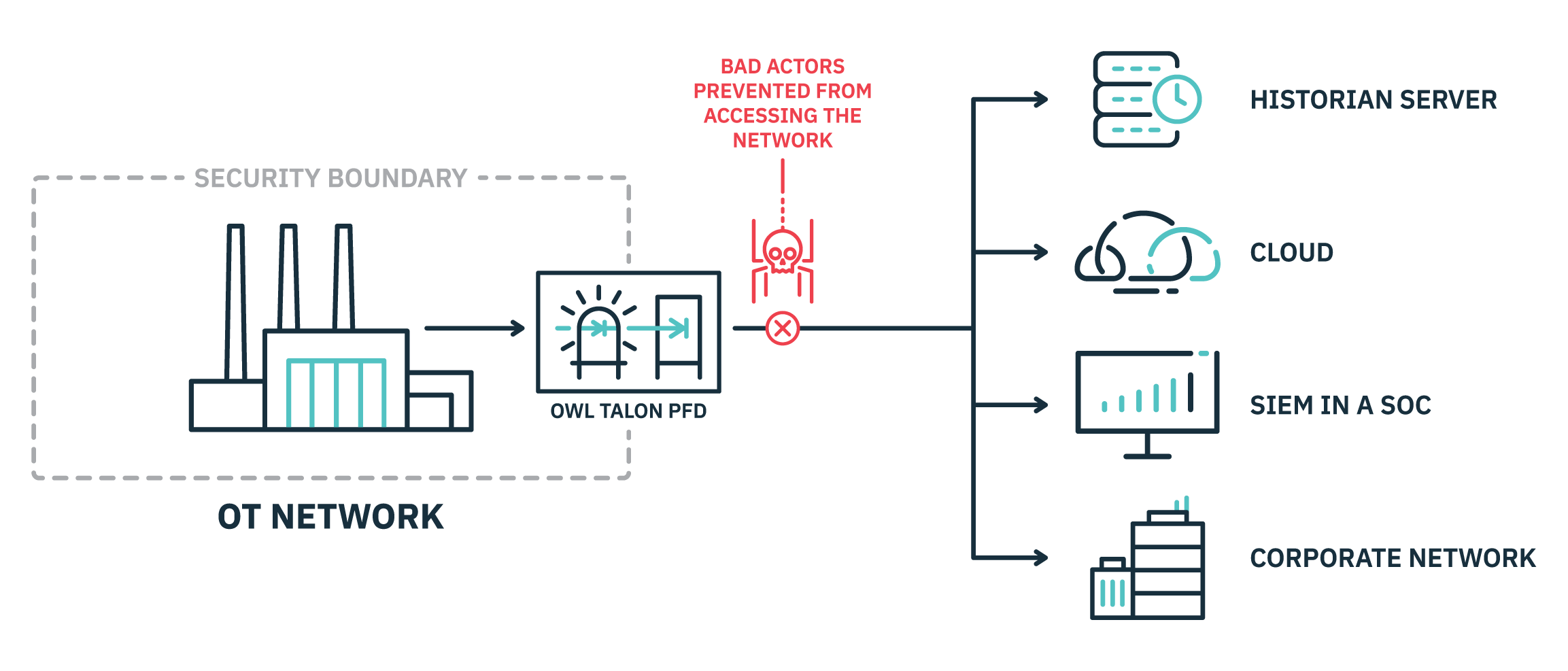Staying Ahead of Threats in the Power Networks Sector
Owl’s hardware-enforced diodes provide unmatched protection, eliminating risks of inbound threats and lateral movement while supporting compliance frameworks like NRC and NERC CIP.
Get Started
Explore how utilities are meeting NERC CIP and TSA requirements while gaining real-time insights, improving reliability, and keeping control systems isolated from risk
Protect the Grid Without Sacrificing Access
Utilities today must deliver more than just power; they must ensure resilience, visibility, and compliance in a threat-heavy, data-driven world. From ransomware targeting OT systems to evolving NERC CIP and TSA mandates, the stakes have never been higher.
Software-based firewalls and legacy segmentation tools fall short in protecting critical operations. At the same time, utilities can’t afford to isolate their networks so completely that operational insights are lost.
Owl Talon changes that.
As a hardware-enforced, one-way protocol filtering diode, Owl Talon allows utilities to securely share operational data with IT, cloud, and analytics platforms—without exposing control networks to inbound threats. It’s trusted to protect national defense systems and is purpose-built to meet the unique challenges of power delivery, grid modernization, and regulatory compliance.


Secure Data Sharing—Without Risk to OT Networks
Owl Talon allows utilities to share operational data—like SCADA outputs, alarms, and historian feeds—with IT, cloud, and analytics platforms, all without exposing critical control systems to inbound threats.
At the heart of Talon is a one-way, hardware-enforced architecture: data can flow out of the OT network, but nothing can come back in. This physical barrier eliminates the risk of malware, remote tampering, and data leakage—creating a secure foundation for visibility, compliance, and modern grid operations.
It’s why Owl Talon is trusted to protect both utilities and the U.S. Department of Defense.
Meeting Regulatory Compliance
Power organizations are held to a higher standard when it comes to the cybersecurity technologies they deploy compared to other critical infrastructure industries, resulting in the need to deploy solutions that adhere to compliance requirements and provide the highest level of security possible to prevent power delivery outages. Regulatory compliance standards that impact the power industry are NRC, NERC-CIP, and NIST. Owl data diodes map to these regulatory controls and are recommended as a best practice for securing OT networks, while enabling data mobility.
NRC
NRC: Regulatory Guide 5.71 – C.3.2.1 Security Defensive Architecture
NERC-CIP
NERC CIP-003-7: Attachment 1, Section 3.1
NERC CIP-005-6: R1 – Electronic Security Perimeter
NERC CIP-005-6: R2 – Remote Access Management
NERC-CIP-007-6: R1 – Ports and Services
NERC-CIP-007-6: R2 – Patch Management
NERC-CIP-007-6: R3 – Malicious Code Prevention
NERC-CIP-007-6: R4 – Security Event Monitoring
NERC-CIP-007-6: R5 – System Access Control
NERC-CIP-010-2: R2 – Configuration Monitoring
NIST
NIST 800-82, rev.2 – 5.1: Boundary Protection
NIST 800-82, rev.2 – 5.11: Unidirectional Gateways